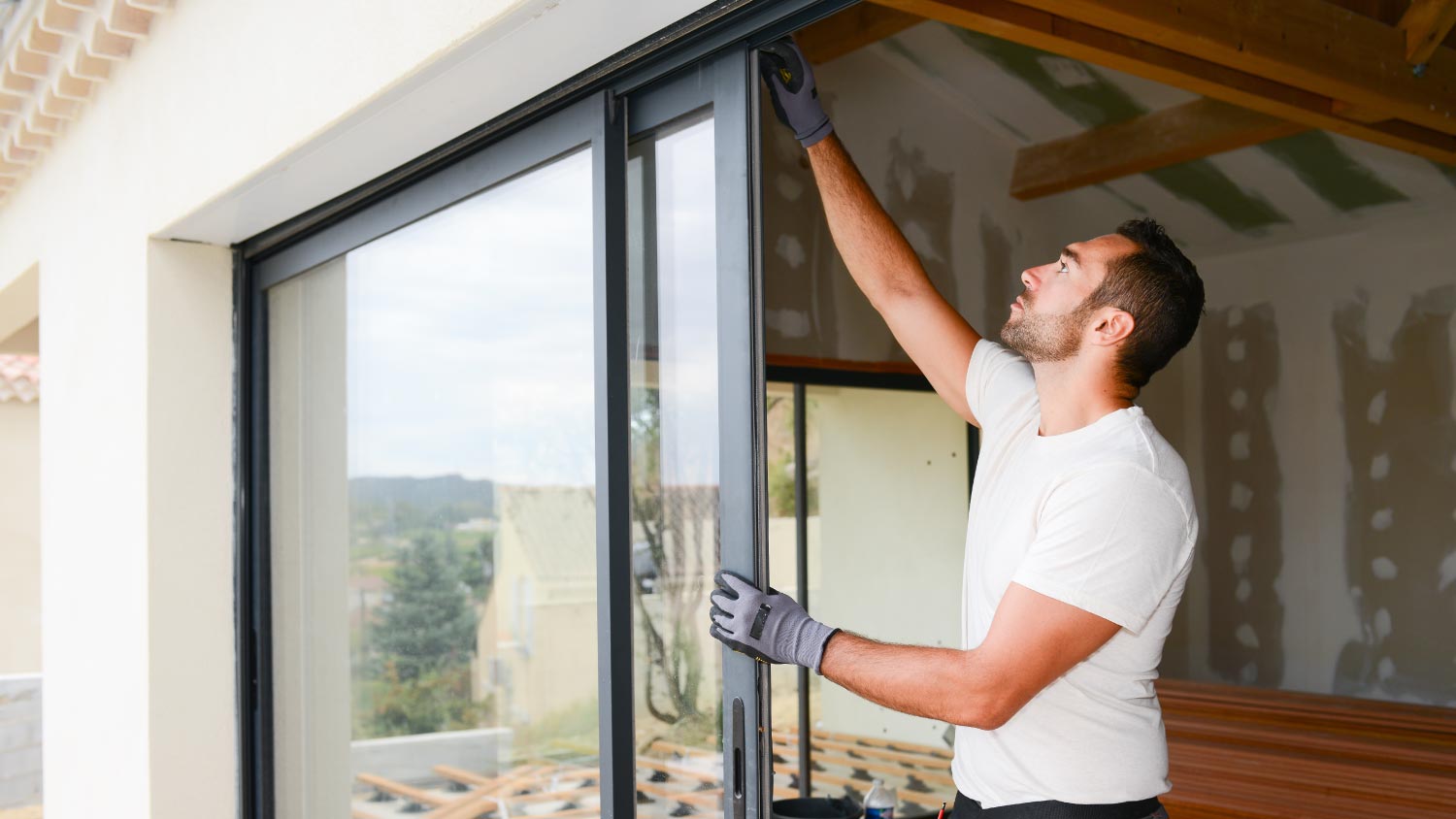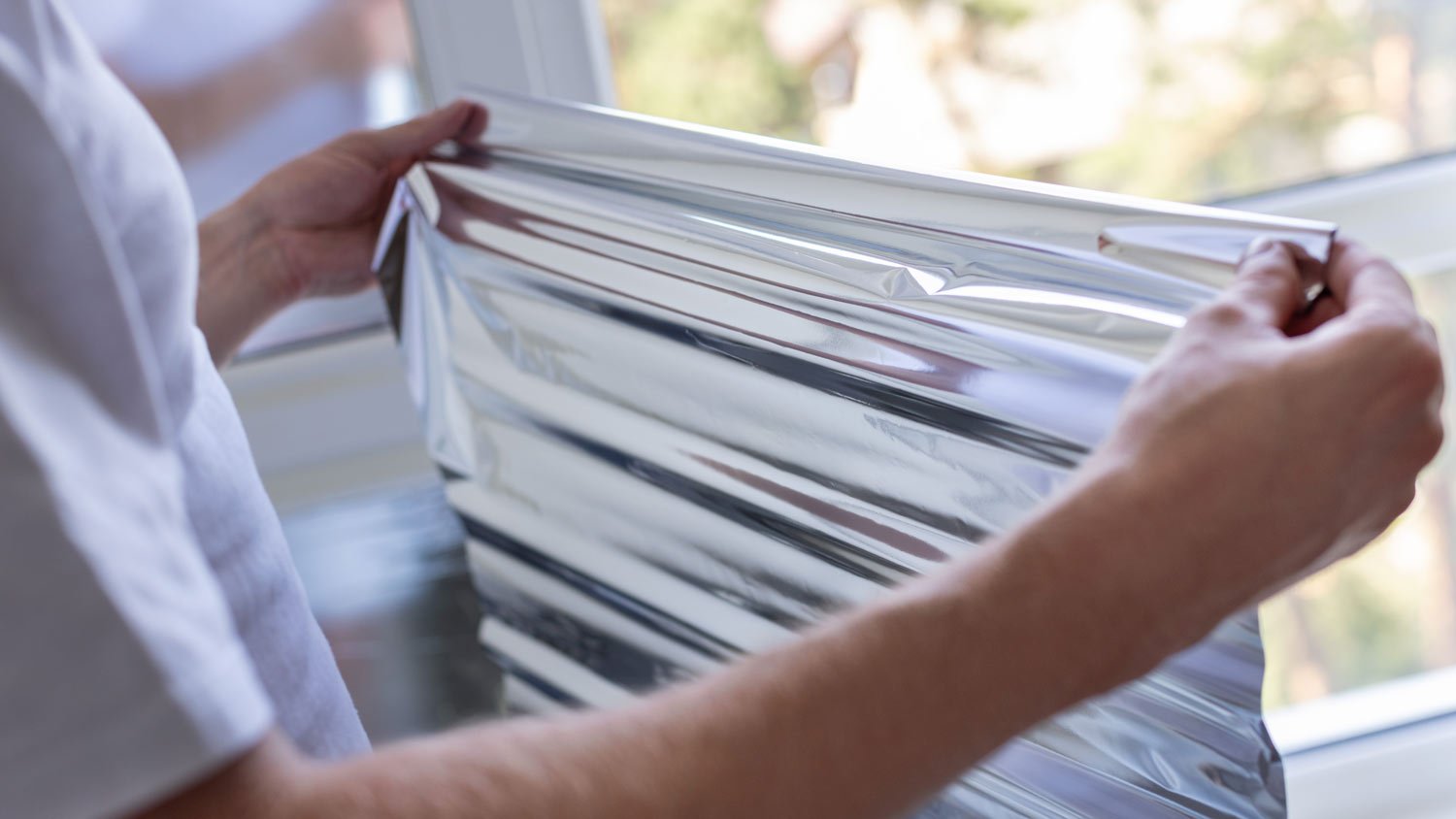
Restoring old windows is a great way to improve the appearance of your home. Costs vary depending on the age of the windows, the number you are restoring, and the window’s material.
Prevent yourself from “going off the rails” by following our DIY guide


Window track repairs cost between $1 and $30 to replace the wheel.
To fix a broken window track, clean the window, replace broken pieces, and lubricate the window.
Prevent further window track repairs by maintaining your windows.
Labor to hire a pro to fix a window is between $30 and $90 an hour.
A broken window track is most likely what you’re dealing with when a window that glides along a set groove stops working. This could be because of a dirt buildup, failing mechanical parts, or even a bent track. Keep reading to explore a few easy steps to effective window track repair, mostly for horizontal sliding windows, that’ll have you back on track in no time.
There are a number of reasons you need to fix a broken window track. Despite the intense frustration that arises when you can’t quite open your window, that is not the main reason. Over time, a warped track or broken window wheels will lead to the degradation of the housing that the window sits in.
If you go too long without embarking on a little sliding window track replacement journey, you may find yourself measuring the space for replacement windows much earlier than you’d like. This is much more expensive than greasing a stuck wheel or straightening a track, so make sure to stay on top of any window track issues as soon as you see them.
Unattended broken window tracks can also decrease the efficiency of your windows if you leave them long enough for your house to degrade. Energy-efficient windows help you save on your electricity bill, keep your home’s indoor temperature more comfortable, and prevent pollen and insects from entering your house.
Like many home repairs, there is no one-size-fits-all answer. For example, if you only need to hammer a track back into alignment, that could cost theoretically nothing if you already own the tools. A spritz of lubricant on a squeaky wheel is a low-cost solution, as well.
If you need to replace a wheel, that shouldn’t cost too much either—between $1 to $30, depending on your window. The good news is that the most common windows have inexpensive wheel housing kits at around $5.
It becomes a different issue entirely if the frame itself is broken. Those repairs or replacements can cost between $175 and $1,000 to repair. The problem could also be a stuck latch or even a loose screw. Pieces like a screw are very inexpensive, but latches and other more complicated hardware can end up costing anywhere from $75 to $200. Although it’s less than an entire window replacement might cost, you can usually avoid having to pay for hardware issues with proper maintenance and quick repairs.
Good news! Window tracks can be replaced and are generally inexpensive. The first step is finding out which window you have by locating the brand or model, sometimes located on the backside of the central window pillar facing you. Make sure to measure both the space and the old track. In fact, bring the old track with you to the store, as employees can be surprisingly excited to help you solve your window track issues.
The good news is, if you can catch and diagnose the issue early enough, most fixes are quite simple. We’re not talking about replacing an HVAC system here. Most window track issues can be fixed with a straightforward cleaning or by replacing a stuck or bent part.

Obvious, maybe, but this always needs to be the first step. Even if you see a broken wheel or notice there’s a pencil stuck in the track (it happens), give it a thorough cleaning before attempting any repairs.
This serves two purposes: making sure your fix has the best chance of success and potentially finding a new, separate issue while cleaning. These little discoveries could save you hundreds of dollars down the line if you address them immediately, making your windows last longer than you may have initially thought possible.
There are not that many pieces that can break on a window track. Below, you will see the fix for each individual piece.
If the window track is cracked or warped beyond fixing, you will need to replace it. If the track has been bent for any reason, you can line a piece of wood against it and lightly tap it with a rubber mallet, book, hammer, or other item until it is bent back into place. Replacing a track itself is different for every window, but it involves removing the old track and installing a new one. Important: Make sure any replacement you may get is the same brand and model.
The second most likely issue will be the wheels that sit on the bottom of the window. These wheels are usually made of thin plastic and break easily. If you notice any issue beyond dust and grime buildup, it’s better to replace the entire assembly. It will only be a few dollars more, and it can be a much faster and more effective fix than breaking the broken pieces down and attempting to remedy the issue.
This includes window clips, latches, locks, and anything else that won’t move when you push the window. The fix is the same as above; give it a few minutes and see if a jiggle and some lubricant won’t solve the issue. If it isn’t clear or fixed after that, it’s usually both cost-effective and time-efficient to just replace the broken piece.
If, after performing the above checks, the window still won’t move (or won’t move easily), you may need to check on the part of the window that allows it to open and close smoothly. This is called a window balance, and your window won't stay up or operate properly if the balance is broken. Luckily, fixing a window that won't stay up isn't too complex.
At this point, you have thoroughly cleaned the window track and fixed any pieces of hardware that may have broken. Don’t consider the job finished until you have lubricated the track itself, as well as any moving parts.
WD-40 is a product you will find in most homes, and although it’s a workable option, you can’t use just any WD-40 variant. Consider an item from WD-40’s Specialist Range—white lithium grease.
It’s slightly more expensive than the regular WD-40, but it won’t run and is both water- and heat-resistant. Plus, it’s better suited for long-term applications, as it’s less messy than regular grease. Because it doesn’t run, the white lithium grease won’t collect as much dirt or dust, so over time, there will be less “gunking up” than you would get with standard WD-40.
The best way to prevent your window track from breaking is to treat the window track like the glass it surrounds. That means treating it with care and with the assumption that it could break with less force than you think. Prevent disturbing your window track by following the tips below:
Perform regular checks. You may notice something in passing that you can fix in ten seconds, potentially saving you ten hours of work down the road (and a good chunk of money).
Inspect the tracks to make sure there is no bending or warping.
If you feel any sticking of the wheels, give them a clean and grease. If that doesn’t fix the issue, replace the wheel assembly.
Regularly wipe the track so there is no debris or excessive dust that could get caught in the wheels.
Avoid placing heavy objects or heavy window treatment sets on the window stool (often confused with the windowsill) that, over time, could bend the track or pull the frame out of alignment.
Address any condensation or excessive moisture issues when they arise. If the problem looks too involved, it’s probably best to call a local window contractor.
If you’re a handy DIYer, you might be inclined to fix these problems yourself. For many of you, that’s great! Learning how to fix issues like a broken window track will help prepare you for more complicated projects down the line, and depending on the time the fix takes, it could result in substantial cost savings, as well.
That being said, with every home repair project, there is always a time to consider hiring a pro. Yes, labor alone averages $30 to $90 an hour, but if you’re dealing with something like moisture leaking into your wall, it really is the most cost-effective solution.
Fixing sticky windows is usually not a big deal, requiring only a little elbow grease. However, complications can quickly become worrisome if there is any water damage to the surrounding framing. Like most DIY projects, if you feel like you may be in over your head, it’s better to call a pro.
From average costs to expert advice, get all the answers you need to get your job done.

Restoring old windows is a great way to improve the appearance of your home. Costs vary depending on the age of the windows, the number you are restoring, and the window’s material.

Discover the energy-efficient window costs. Learn about installation prices, cost factors, and tips to save money on your window upgrade.

Smart glass makes your home more comfortable and energy-efficient, but at what price? Learn how much smart glass costs and if it’s a good option for you.

If you're having problems with window film that include bubbling, peeling, and water spots, come learn about the simplest solutions for making window tint look good again.

Not sure how to protect skylights from hail? We’re breaking down how you can DIY your way to a safer home by ensuring hail doesn’t damage skylights.

Want to know how long vinyl windows last? Learn the average lifespan of vinyl windows and the core factors that affect their performance over time.